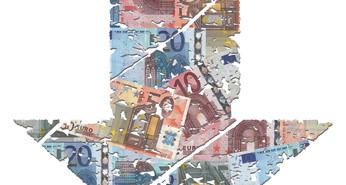The Black Friday retail scrum may have made Thanksgiving football look civilized in comparison, but it appears that the U.S. consumer spending recovery is beginning to lose momentum. According to data reported by Bloomberg and released by the National Retail Federation, the average shopper spent 3.9% less on the weekend relative to last year, but the number of trips rose 1.4%. This drove an overall 2.3% increase in sales – the smallest gain since the financial crisis.
This is having an interesting effect on the foreign exchange markets this morning, causing investors to sell assets from countries that have traditionally been powered by the American consumer. Commodity-linked and emerging market currencies are on the defensive, while the dollar is up.
The euro is trading on a weaker bias, down against the greenback and near an 11-month low against the pound after purchasing manager indices were released, showing that wide growth disparities are emerging within the economic union. Despite an overall expansion, manufacturing in France and Spain contracted – setting the stage for continued political turbulence and putting a cap on the common currency’s gains.
Here in Canada (where consumers say “sorry†after punching each other in the shopping queue) the currency is beginning the week on a dramatically weaker footing. Friday’s higher-than-expected third quarter growth report did little to reverse the gloom, given that inventory building represented a significant proportion of the headline number.
Traders are now positioning ahead of Wednesday’s meeting of the Poloz Lunch Club, where few expect to see a return to the optimism that characterized Carney’s reign. Market participants now believe that the Bank will keep borrowing costs unchanged through the end of 2014, implying that the Federal Reserve will be the first off the starting block when the next tightening cycle begins. Indeed, the ten year Treasury yield spread against comparable Canadian securities has almost doubled this year.
It is important to note that while our longer-term base case is heavily biased against the Canadian dollar, the conditions for a near-term short squeeze are in place. Bearish interest has skyrocketed in recent months, and went through the roof last week after Goldman Sachs forecast a 1.14 dollar next year. This has made the market vulnerable to unexpectedly positive developments – if the crude price turns up, or economic performance improves, short sellers will be forced to close positions in a hurry. Frankly, once your shoeshine boy and Goldman are telling you about a trade, it’s time to tread carefully…
Taking a broader perspective, the week ahead is heavily laden with potential volatility catalysts, with most of the major central banks due to drop rate decisions, followed by the mother of all economic releases – the euro is trading on a weaker biasnumber on Friday. Expectations are now sitting around the 180k mark, with many traders taking a cautious approach to the November number. A below-forecast print should have a positive impact on asset prices, as investors push taper expectations further into 2014, while a positive number should have the opposite effect.
As such, hedgers should strongly consider placing limit orders over the coming days – capitalizing on sharp spikes in volatility is best done by preparing for them in advance, versus trying to react after the fact.
Further reading:
Auto vs. Manual Trading: Which to Choose – the Human or the Robot?
World Trade Changes as the Yuan Becomes More Flexible



